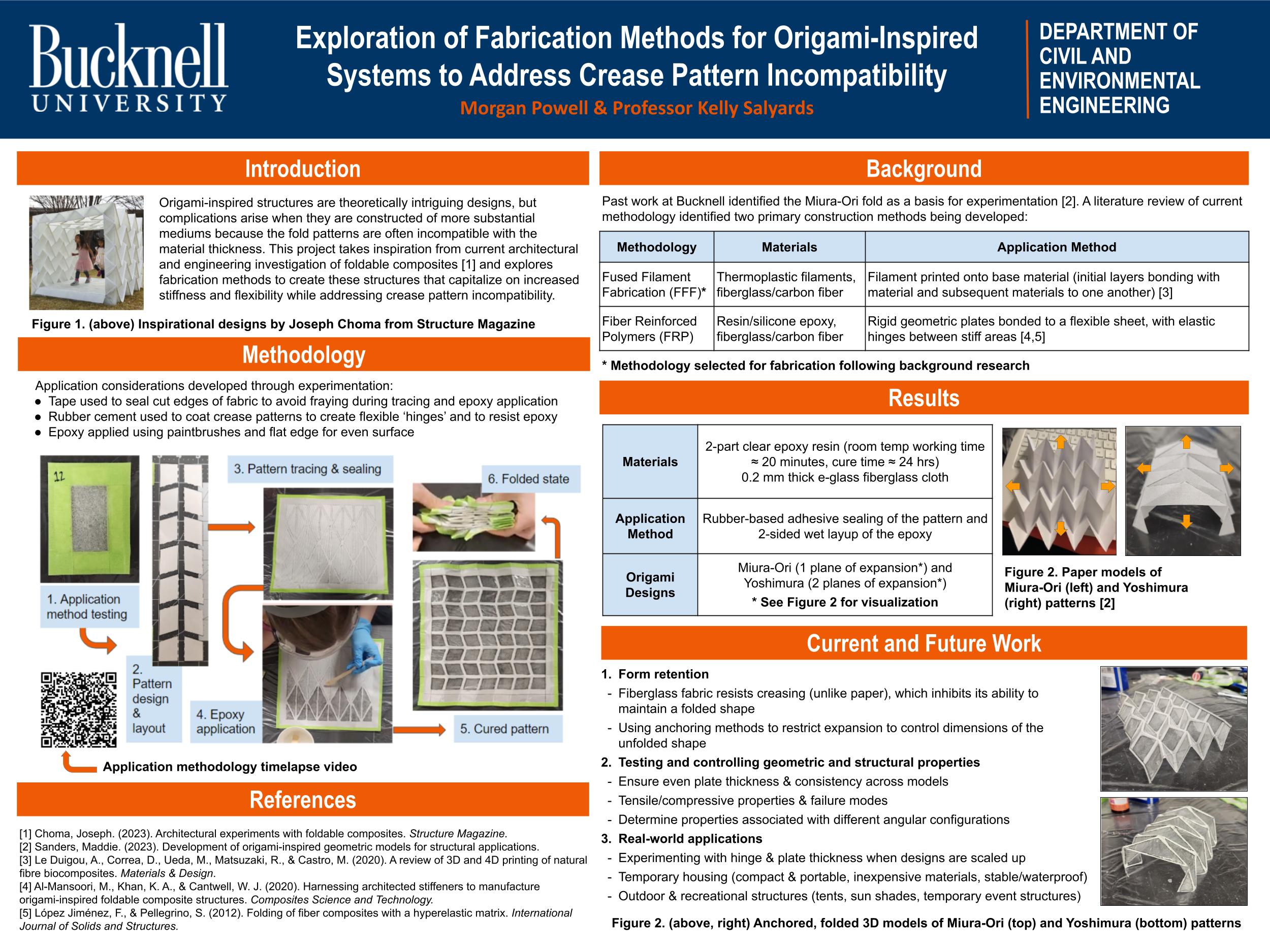
Exploration of Fabrication Methods for Origami-Inspired Systems to Address Crease Pattern Incompatibility
Author:
Morgan Powell ’26Co-Authors:
Faculty Mentor(s):
Professor Kelly Salyards, Civil EngineeringFunding Source:
Department of Civil EngineeringAbstract
Origami-inspired structures are theoretically intriguing designs, but complications arise when they are constructed of more substantial mediums because the fold patterns are often incompatible with the material thickness. This project explores fabrication methods to create foldable structures that capitalize on the increased stiffness and flexibility of the system, while addressing the crease pattern incompatibility. Past work at Bucknell identified the Miura-Ori fold as a basis for experimentation. This project explores the feasibility of utilizing fiber reinforced polymers (FRP), a series of rigid plates bonded to a base material with flexible hinges between stiff areas. The materials used for construction experimentation are an epoxy resin and fiberglass cloth due to their inexpensive nature and adaptability. Initial testing involved perfecting the application method of the epoxy on the fiberglass. The critical issue here was ensuring a clean edge on the epoxy to control the location and angles of the hinge. The final application method selected for moving to design was using rubber-based adhesive as a seal on the fiberglass fabric to outline the geometric pattern. A double-sided, wet layup application method of both the rubber-based sealant and the epoxy resin was deemed most effective at ensuring consistent thickness and clean edges. Using this technique, a successful 3D model of the classic Miura-Ori fold has been constructed and analyzed for necessary improvements. Ongoing work focuses on improving the system’s ability to maintain its form after folding and using the same materials and fabrication to scale-up designs and work towards real-world applications.